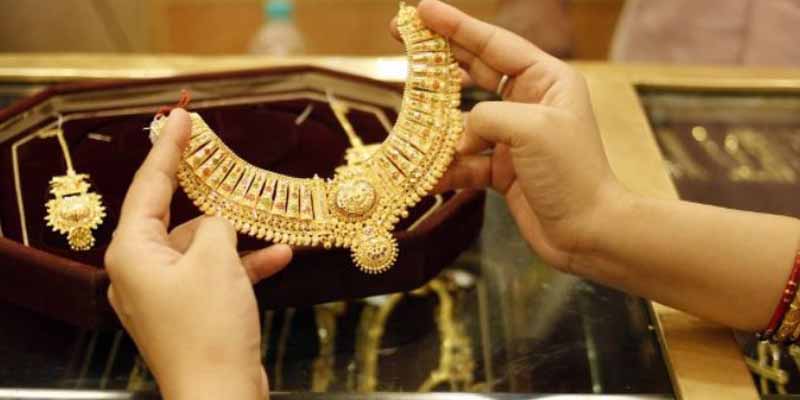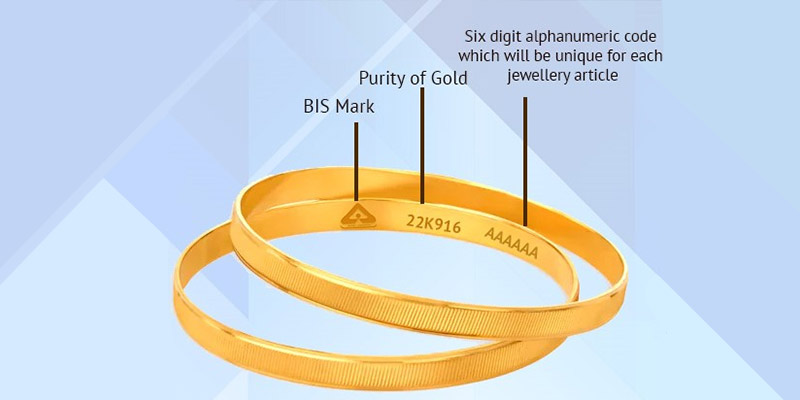- India
- Sep 02
Explainer / Mandatory hallmarking of gold jewellery
As many as 3.7 crore jewellery articles were hallmarked during April-July period this year.
Mandatory hallmarking of gold jewellery came into force from June 16, 2021.
The Bureau of Indian Standards (BIS) said that 8.68 crore jewellery articles were hallmarked in the year 2021-2022.
What is hallmarking?
• Hallmarking is the accurate determination and official recording of the proportionate content of precious metal in jewellery/artefacts or bullion/coins.
• Hallmarks are marks used in many countries as a guarantee of purity or fineness of precious metal articles.
• The BIS Hallmarking Scheme has been aligned with international criteria on hallmarking.
• Hallmarking of gold jewellery was started by BIS in April 2000 to provide third party assurance to consumers on the purity of gold jewellery or its fineness.
• The scheme for hallmarking of silver jewellery/artefacts was launched in October 2005.
• Under the scheme, while the jewellers are granted registration to sell hallmarked jewellery, Assaying & Hallmarking (A&H) centres are recognised to assay the purity of the jewellery submitted by the registered jeweller, along with declaration of purity and to apply hallmark on such jewellery which is found conforming to relevant Indian standard including declared fineness. The recognition of an A&H Centre is done against IS 15820:2009.
• The main objectives of the Hallmarking Scheme are to protect the public against adulteration and to obligate manufacturers to maintain legal standards of fineness.
• In India, at present two precious metals — gold and silver — have been brought under the purview of hallmarking.
• The annual consumption of gold which was estimated at 65 tonnes in 1982, has increased to over 800 tonnes presently.
• About 80 per cent is for jewellery fabrication (mainly 22 carat purity) for domestic demand, 15 per cent for investor demand and barely 5 per cent for industrial use.
Implementation of mandatory hallmarking
• The implementation of mandatory hallmarking was carried out in two phases.
• In the first phase, three grades of gold articles — 14 carat (585 fineness), 18 carat (750 fineness) and 22 carat (916 fineness) — were covered under mandatory hallmarking order. In this phase, the order was implemented in 256 districts having at least one Assaying and Hallmarking Centre.
• The second phase of mandatory hallmarking was implemented from June 1, 2022 vide hallmarking of gold jewellery and gold artefacts (Amendment) Order, 2022, dated April 4, 2022. The second phase of the mandatory hallmarking covers three additional caratages of gold jewellery/artefacts — 20 carat (833 fineness), 23 (958 fineness) and 24 carat (995 fineness). It covers additional 32 districts under the mandatory hallmarking regime wherein an Assaying and Hallmarking Centre (AHC) has been set up post implementation of the first phase of the mandatory hallmarking order.
• More districts are likely to be covered under mandatory hallmarking order in due course of time.
• The registration of jewellers was made free and valid for lifetime. Hallmark Unique Identification (HUID) based hallmarking portal was launched on July 1, 2021 wherein the entire workflow in the assaying and hallmarking centre is automated and made online.
• The number of BIS registered jewellers has increased from 43,153 on July 1, 2021 to 1,43,497 on August 1, 2022. Number of recognised Assaying and Hallmarking Centres have also increased from 948 on July 1, 2021 to 1,220 on July 31, 2022.
Bureau of Indian Standards
• Bureau of Indian Standards (BIS) was established in 1986 assuming the functions of the erstwhile Indian Standards Institution (ISI).
• In its capacity as the National Standards Body of India, BIS is actively involved in matters of international and regional standardisation.
• India has been actively involved in the matters of international standardisation and was one of the founding members of International Organization for Standardization (ISO).
• BIS is a member of the International Electrotechnical Commission (IEC) and regional standards bodies like Pacific Area Standards Congress (PASC) and South Asian Regional Standards Organization (SARSO).
• BIS operates under the framework of the BIS Act of 2016 and the Rules and Regulations framed thereunder.
Objectives of BIS:
i) Harmonious development of the activities of standardisation, marking and quality certification of goods.
ii) Provide thrust to standardisation and quality control for growth, and development of industry on one hand, and to meet the needs of consumers on the other.
• Its headquarters is situated in New Delhi. It has five regional offices located at Kolkata, Chennai, Mumbai, Chandigarh and Delhi. There are 32 branch offices.
• BIS develops Indian Standards through a consultative mechanism in technical committees comprising stakeholders so that views and interests of all are given due consideration while formulating a standard.
• BIS operates a Product Certification Scheme. The presence of Standard Mark (popularly known as ISI mark) on a product indicates its conformity to the relevant Indian Standard. Before granting a licence to any manufacturer, BIS ascertains the availability of required infrastructure and capability of the manufacturer to produce and test the product conforming to the relevant Indian Standard.
BIS has been providing traceability and tangibility benefits to the national economy in a number of ways:
i) Providing safe reliable quality goods.
ii) Minimising health hazards to consumers.
iii) Promoting exports and imports substitute.
iv) Control over proliferation of varieties through standardisation, certification and testing.
Manorama Yearbook app is now available on Google Play Store and iOS App Store



